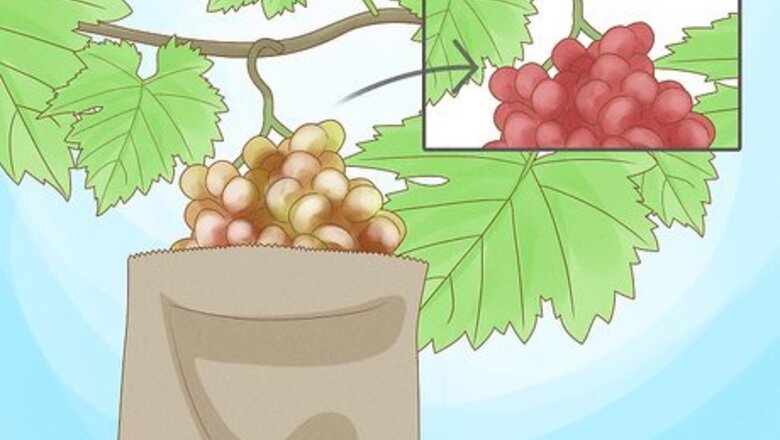
views
Covering Bunches with Bags
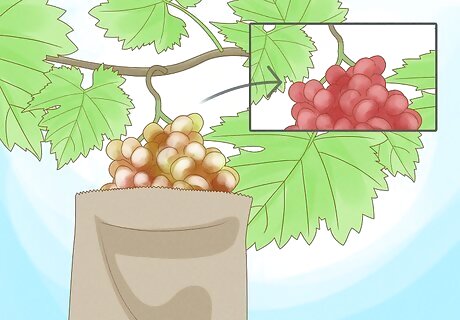
Put the bags on the grape bunches when they change colors. Birds generally aren't attracted to grape bunches until they start maturing. When the grapes start to mature and change colors, bag them as soon as you can.
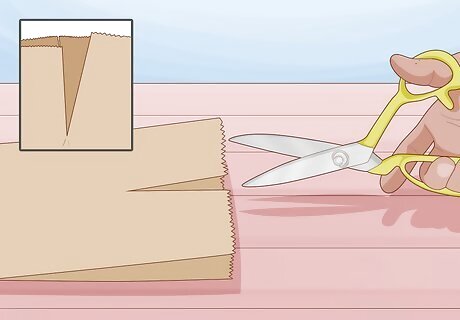
Cut 2 inches (5.1 cm) slits in a paper bag. Take a pair of scissors and make 2 2 inches (5.1 cm) slits on either side of the bag. Follow the center seam of the bag as a guide for where to make the slit. The slits are where the grapevines will poke through the bag.
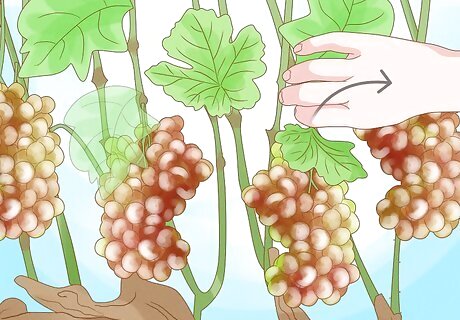
Pinch off any leaves directly around the grape clusters. Leaves need direct sunlight and will wilt if left in the paper bag. Pinch or cut away any leaves that the paper bag would cover once you bag the grapes. Although leaves cannot grow in the paper bag, your grapes can grow without wilting. They may, however, mature slowly.
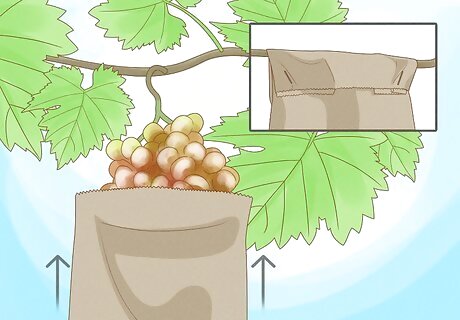
Slide a bag over the grape bunches. Position the bunches so the vines rest near the side slits. Fold the bag's top flap over and tape or staple it shut to keep it in place. Repeat this process on all of your grape bunches until you've covered all of them.
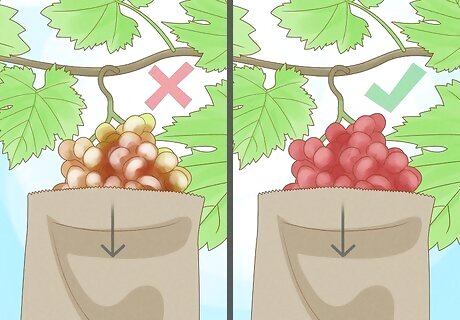
Keep the bags on until you plan to harvest them. Avoid taking off the paper bags until you're ready to harvest the grapes. If wind, rain, or heavy weather conditions tear the bags off, replace them with new bags when the weather clears. If you're not sure whether it's time to harvest the grapes, take the bag off partially. Examine the grapes and, depending on whether they've matured, either harvest them or put the bag on again.
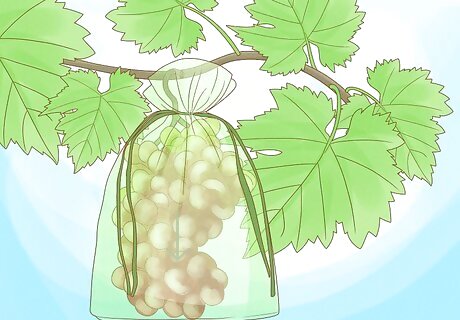
Use organza bags as an alternative to keep a close eye on the grapes. Paper bags are bulky and can make it hard to tell how you grapes are growing. To monitor your grapes as they grow, pull an organza bag over a grape bunch and cinch it in place. Do not remove the bag until you harvest the grapes. Organza bags are translucent fabric drawstring bags, and they are available online or at most craft stores. If you use organza bags, you do not have to pinch of any leaves.
Wrapping Netting or Tulle Around Vines
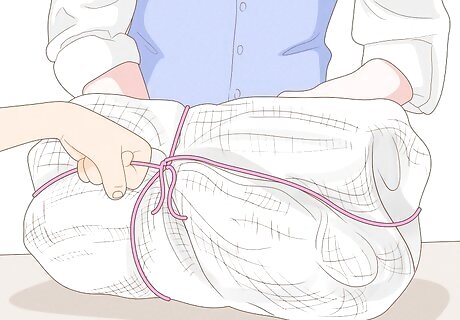
Add bird netting or tulle when the grapes change color. Grapes will become appealing to birds as they ripen. To prevent wildlife from eating your grapes, put the netting on after the grape bunches have begun to change color. Buy netting or tulle online, at a craft store (for tulle), or at a nursery store (for netting). If you purchase netting, make sure you purchase bird netting. You can put the netting on before, but until the grapes start ripening, it's unnecessary.
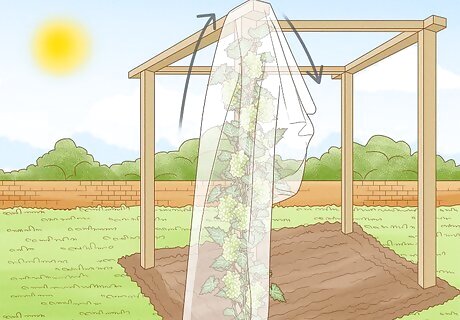
Staple the tulle or bird netting above the grapes. Depending on what you're growing your grapes on, you may staple it to the pergola, stake, or fence. The tulle or netting should hang directly above the grapevine so you can easily wrap it around your plant. If you do not have anything above your grapes, build a trellis or put up stakes surrounding the plant to attach your tulle or netting.
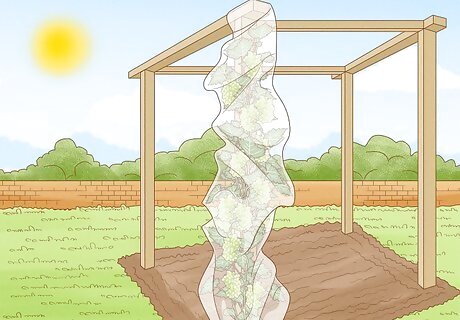
Wrap the bird-netting or tulle loosely around the plant. Cover the plant with a protective layer of tulle or netting. The wrap should encircle the plant without restricting vine growth. If the wrap compresses the vines inward, try loosening it. If you've loosened the netting or tulle enough, you should be able to water and care for the grapes.
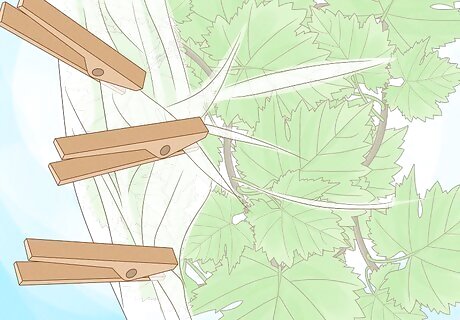
Fold the tulle or netting together. Take one end of the wrap and fold it over the other end. Staple the ends together or use clothespins to keep it in place. This will prevent wildlife from disturbing the wrap as your plants grow. Clothespins are ideal because they make accessing the grapevines or adjusting the wrap simpler.
Trying Bird Repellents
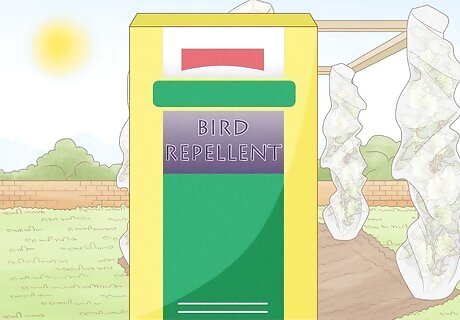
Use bird repellents as a supplement to bags, tulle, or netting. Covering your plants are the most effective way to prevent birds from eating your grapes. For added protection or to deter particularly relentless birds, however, you can try repellents as an added precaution.
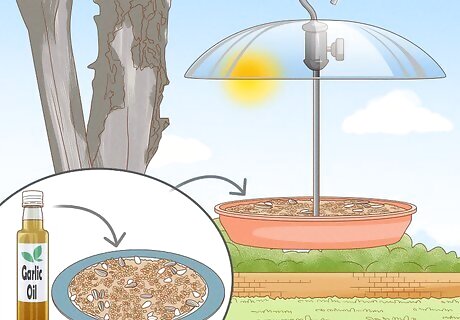
Fill a bird feeder with garlic oil-laced seed. Garlic oil is a natural bird repellent that can teach birds to avoid your garden over time. Spray birdseed with garlic oil and set up a bird feeder near your grapevines. Put the garlic oil-covered seeds in the bird feeder and check whether fewer birds infest your garden over time. Garlic oil's strong odor can also repel some insects.
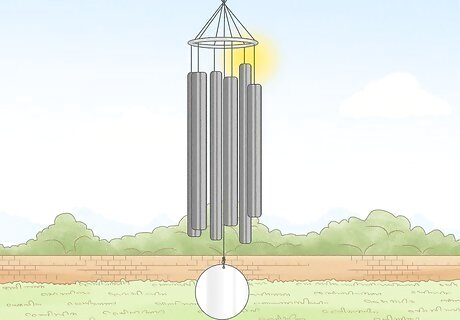
Set up a tape of irritating noises or wind chimes. Bird distress calls or predatory animal noises can train birds to avoid a certain area. Search "irritating noises for birds" online and put a recording on the speakers to scare birds from your yard. Wind chimes can also repel birds, if you'd prefer a pleasant-sounding alternative. Ask your neighbors before setting up a tape—you want to drive away birds, not people.

Tie shiny Mylar balloons near your grapevines. Draw menacing faces or predatory animals on your balloons to frighten animals away. Secure the balloons to posts around your garden, and move them every few days to mimic a live predator. If you don't mind a higher electricity bill, strobe lights can also repel birds.
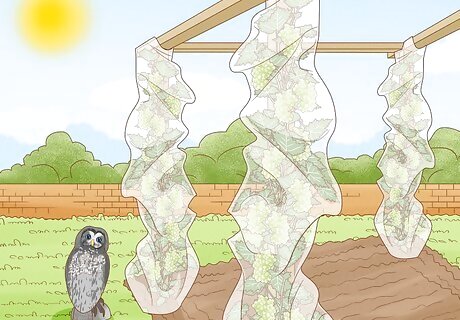
Put up lawn ornaments of common bird predators. Lawn ornaments shaped like predatory animals can keep birds away. Look for ornaments shaped like owls, foxes, or snakes online or at your local garden center and set them up near your garden. Move the lawn ornaments every few days to trick the birds into thinking they're alive If you cannot find any lawn ornaments, you can also cut outlines shaped like predatory animals out of black paper and secure them to a flat surface.
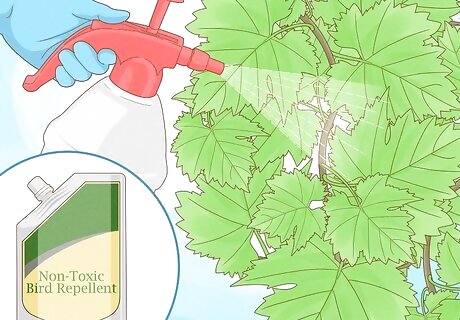
Spray a non-toxic bird repellent. Killing wild birds is illegal in most countries, and poisonous bird repellents could contaminate your grapes. Purchase a non-toxic repellent, preferably made from natural ingredients, and spray it as needed around your garden. You can get non-toxic bird repellents online or at some nursery garden centers. Ask the store employee for advice on repellents that are safe to use near your garden. Check the bird repellent's directions for specific safety instructions. You may need to reapply the repellent every few days or weeks as it wears off.
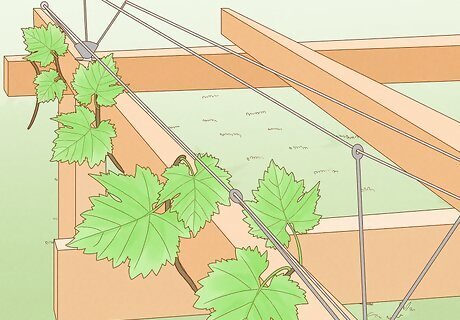
Set up bird wire in your yard. Bird wire is made of parallel wire strands strung between pegs, which prevents birds from landing. Surround your garden and the specific grapevines with bird wire to prevent infestations. You can purchase bird wire online or from some garden centers. Avoid putting up sharpened metal spikes. Although this method is common, some birds will still land and can get impaled.



















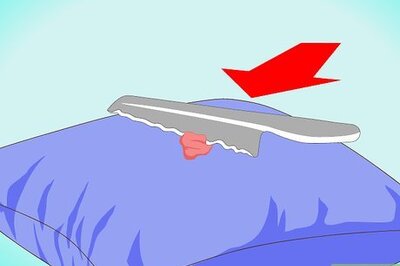
Comments
0 comment